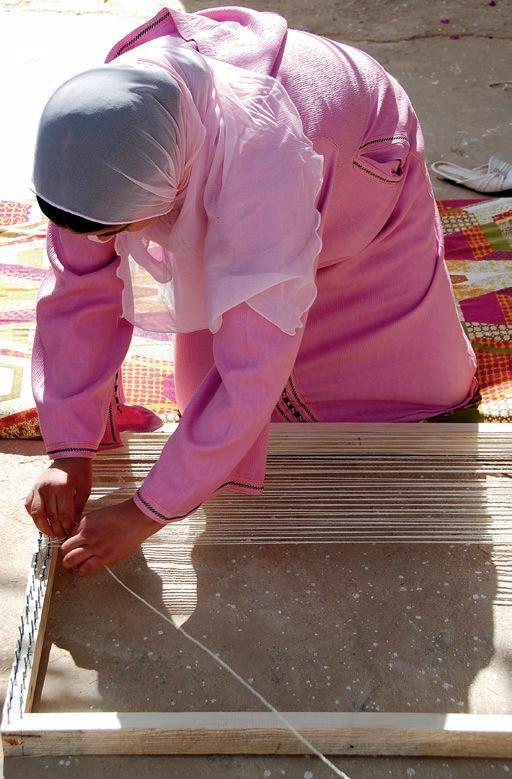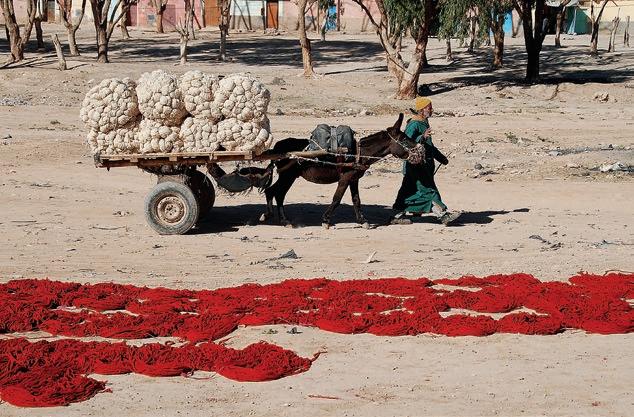
2 minute read
Tying the KNOT
Ensconced in the steamy Haouz Plains of Morocco with a group of infidels and coquettish young Muslim women, Torie Olson soon learns her weaving workshop offers much more than just instruction on tying the knot.
Story and Photos by Torie Olson
Advertisement
We pull up in front of a long wall made of the Wsame pink rock that heaves out of every inch of Morocco’s Haouz Plains. Mohamed, our guide, honks in front of a metal gate. It is ornamented with a large diamond, symbol of the magic eye and credited with the power to repel evil.

We may be considered repellant by some in Sidi Mokhtar, this dusty town where we have come to study weaving; for we are four strangers from England and the United States. To make matters worse, we are infidels (nonMuslims), female and unveiled. But the widow Zineb has no problem with that. Salaam Aleikum! “Peace be with you!” she says, kissing us on both cheeks and bidding us to enter the closed world of Bou Sbaa women.

Zineb wearing a traditional black head scarf.
Our twenty-something tutors are in hijab. Here, that means that all but their faces and hands are covered. I had thought they would all be wearing traditional Saharan robes, but the younger women are wearing headscarves and bathrobes. Evidently, this is the new streetwear in Sidi Mokhtar.

Rabha demonstrates how to warp a loom.
Behind the pink wall, we find a simple, one-story house, white washed and wreathed in fuchsia bougainvillea. Bordering two sunlit courtyards are a kitchen with gas stove and refrigerator, an immaculate bathroom featuring a hole and two footprints, and several salons lined with divans. As we await tea, the Bou Sbaa smile at us. With no common language, we smile back. Having little schooling, they speak no French or English. “Most girls learn the skills they need at home,” Mohamed explains. “A father wants his daughters next to him, before his eyes, safe.”

In much of village Morocco, the study of weaving is the gist of a girl’s education. Unable to attend school for social or economic reasons, she learns the fundamentals through fibers. When female elders teach her to spin, she understands something about physics. They teach her to dye and she gets a bit of chemistry. They show her how to count threads and create geometric patterns and she picks up some math. They divulge the meaning of tribal symbols, and she masters a second language.

Large skeins are tied together with colored rafia before being placed in the dye-pot.
Often, her hands-on training ends with the making of a wedding cloak. After weaving, she will decorate it with a thousand and one sequins to ward off the djinn or evil spirits, for they are especially jealous of brides. And one day soon after, she will wrap herself up in her shimmering shawl and ride a white horse to the home of her groom. Sound like a fairy tale?

As a fresh batch of yarn sits drying in the sun, a new load of yarn arrives by donkey cart.




